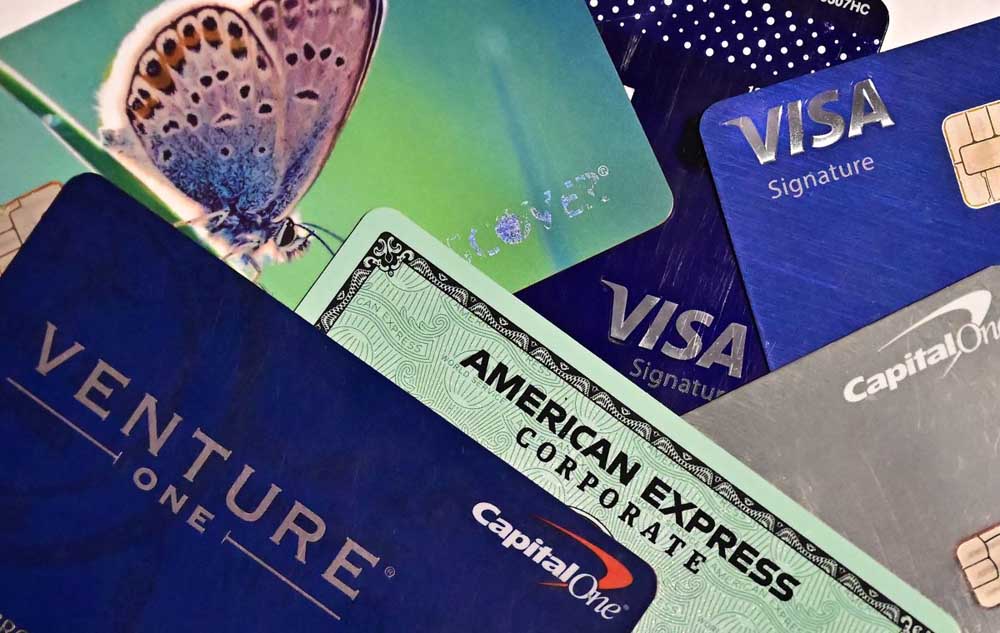How to choose the best rewards credit cards
Published 10:01 am Saturday, November 18, 2023

- Credit card spending remains a key plank in the U.S. domestic growth story.
I’ve been writing about personal finance since around 2016, when as a reporter I talked to financial experts on a near-daily basis about best practices for building wealth. In 2020, after more than a year of rigorous study, I became a certified financial planner professional, which taught me to think critically about financial decisions.
Like signing up for credit cards.
Credit card rewards have helped me pay for international flights, nab great concert tickets, gain entry into comfy airport lounges, lower my statement balance, and so much more. I’m a big fan — and I’m far from alone.
Since around 2019, Americans are putting more than 90% of total annual credit card spending on rewards cards, according to a report from the Consumer Financial Protection Bureau.
Related: I get free flights just by paying rent. Here’s how I did it and how you can too.
Credit cards are an important tool for building and maintaining good credit. So why not earn extra cash and perks for your everyday spending? As long as you’re paying your credit card bill in full and on time, the logic checks out (alas, more than half of U.S. cardholders do not).
CFPB reported that cardholders redeemed a total of $35 billion in rewards in 2022 (excluding the value of points or miles earned on co-branded hotel and airline cards). That shakes out to a rewards value of $167 per cardholder, on average — a 44% increase from 2021.
As a financial planner, friends and family often ask me which credit card they should use. There isn’t one answer. Instead, my best advice to those looking for a rewards card is to keep it simple: Choose two credit cards that offer different rewards structures and benefits — and move on.
Compare best savings rates
Pick cards that match current spending habits
Three-fourths of general purpose credit cards in use are rewards cards — the market is saturated. And too many people take this to mean that their wallets should be stuffed with them. But the more credit cards you have, the more complicated your money system becomes.
Not only will you need to put more thought into which cards to pull out for specific purchases to reap the most rewards, but you’ll need to keep track of more balances and bill due dates, and possibly set aside more of your budget to cover annual fees.

FREDERIC J. BROWN/Getty Images
I’m not in the business of ranking rewards credit cards, but plenty of other journalists and rewards enthusiasts are. Check out their lists and see what speaks to you. But resist the urge to get the most expensive and flashiest card available. Sign up bonuses are a nice perk, but will the card be of any value to you after that?
I recommend aiming to have one of each of the two types of rewards cards — points/miles and cash back — and starting with the latter. Cash back cards usually don’t have an annual fee, so there’s no outlay. And you likely won’t need an excellent credit score to get approved, like you do with premium travel rewards cards.
Cash back credit cards have the most straightforward rewards structure, providing you with a flat-rate percentage discount on different categories of purchases, such as dining or grocery stores. Depending on the card, cash back can show up as a statement credit in your account or be sent to you as a check. For example, 5% cash back at restaurants means you’d earn $5 back for every $100 you spend dining out.
If you’re a frequent traveler looking for premium benefits, such as airport lounge access, look at your options for a premium travel rewards card (your credit score may be a factor in which cards are available to you).
Travel cards reward you with points or miles for every dollar you spend, with more awarded when you spend on airfare, accommodations, and dining. You usually get the most value for your points if you use them to purchase — you guessed it — more travel, but some cards will also boost the value of your points when you shop with certain brands.
If you’re a loyalist to one hotel chain or airline, consider a co-branded card that gives you the ability to unlock airline status, free or discounted flights and hotel stays, and other travel-related perks.
Just remember: Your spending shouldn’t be dictated by the credit cards you have. Pick cards that match your current spending habits, not some future ideal.




